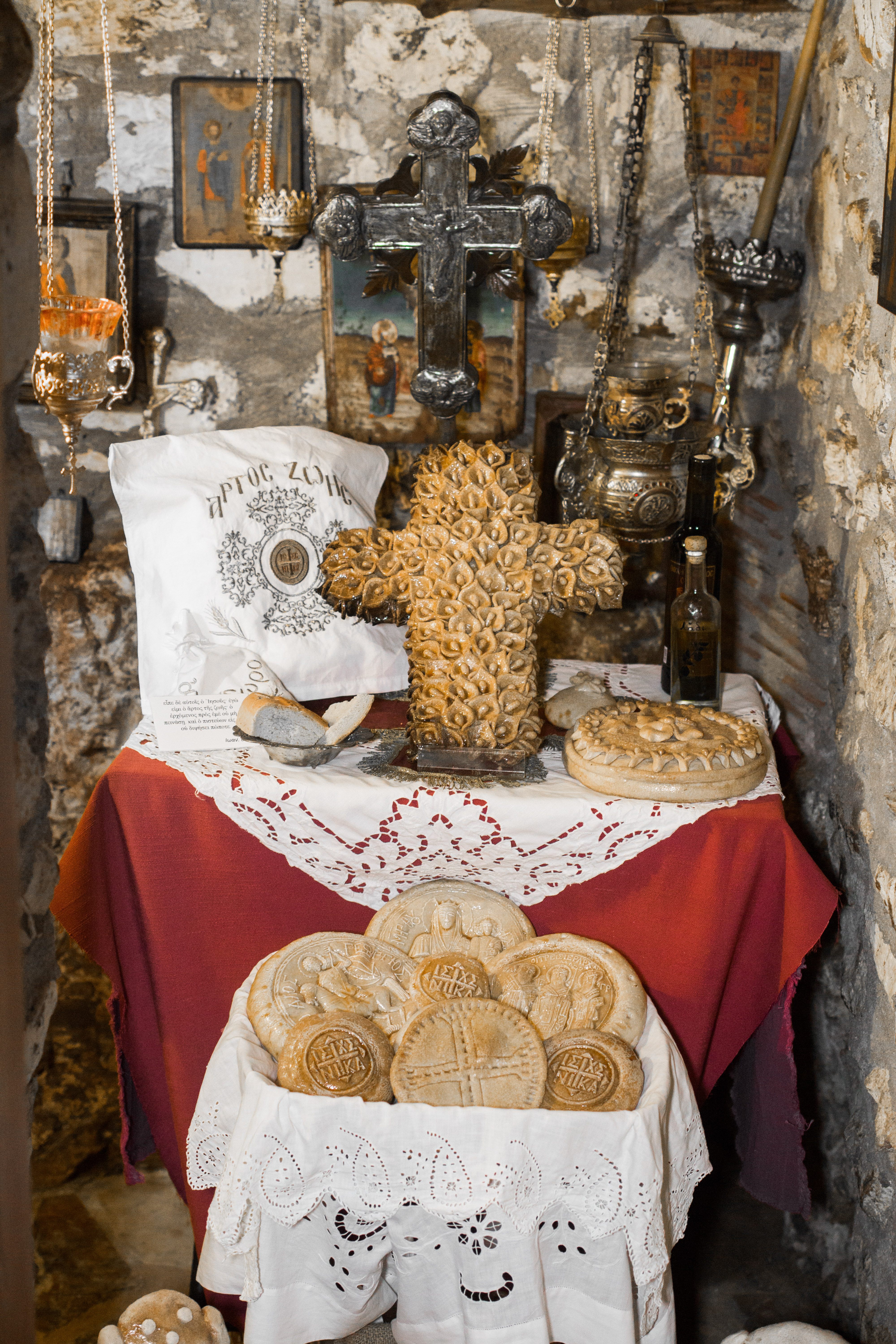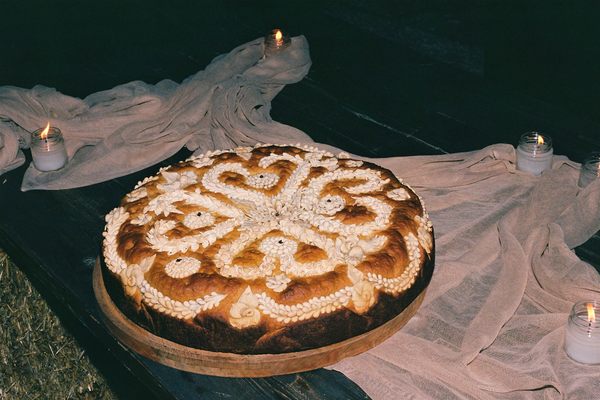Four years ago, I traded in the Midwest for sunny Athens. My wedding there last summer inspired me to learn more about my own cultural traditions, many of which didn’t come on the cross-Atlantic trip with my family when they emigrated. One day, I stumbled across the picture of an elaborately decorated loaf of bread at a Greek church ceremony. That photo was my first introduction to the embroidered breads of Greece.
These loaves are often called ploumisto psomi or kentito psomi, meaning “colorful” or “embroidered” in Greek. Each loaf has an ornate scene appliqued to the crust, with knobs and whorls of dough forming meaningful images. Little did I know that this long-standing tradition was being preserved in a small village right outside of Athens, inside a museum featuring intricately woven breads of all shapes and sizes.
The European Bread Museum, established in 2005 by the Varnavas Folklore Society and housed in the Varnavas Folk Museum, features over 3,000 preserved breads from 50 countries. This unexpected museum seeks to honor the significance of bread within traditional Greek culture, but also the artistry of Greek bread itself.

Visitors meandering through the museum will pass loaves of bread hung on the walls like art. At the rear of one room, there’s a recreation of a traditional wedding display. The centerpiece is a giant “wedding roll,” encased behind glass along with στέφανα, or wedding crowns, a silver-framed black-and-white matrimonial photo of a happy couple, and even an ornately woven bread intended just for the best man.
In Greek folk tradition, the wedding roll, or gamokoulourais, is an elaborately decorated loaf of bread prepared by female relatives in anticipation of the upcoming nuptials. Each loaf is adorned with meaningful motifs; from the lemon blossoms which symbolize wishes for an abundance of children and lily flowers for summoning happy news. The wedding roll, presented in an heirloom tablecloth, was traditionally enjoyed by guests instead of the modern wedding cake.

According to Milea Pappa, the president and founder of the European Bread Museum, Greek decorative breads fall into two categories. The “Circle of Life” breads commemorated pivotal moments in individuals’ lives, including birth, baptism, engagement, marriage, and ultimately death, serving as tangible markers of life’s milestones. The type of breads in the “Circle of Time” category were baked to celebrate annual feasts and agricultural events such as the harvest.
Each area in Greece once had its own designs to commemorate special occasions, which were often religious in nature. “The embroidered bread is inextricably linked to the Christian religion,” Pappa says. Often, bakers leavened their loaves with a starter made with water infused with basil that was blessed by a priest, during the feast of the Exaltation of the Holy Cross in September.
Using simple tools such as pointed sticks and combs, bakers craft various symbols into the dough, with each detail reflecting wishes of love, health, wealth, fertility and happiness. While different regions used “similar designs with common symbolism,” Pappa says, the breads uniquely reflect each community’s moments of joy and sorrow. Each bread may take up to an hour to elaborately decorate by hand, so it’s no surprise that this folk art is dying out.

While the exact roots of embroidered bread are murky, the tradition dates back at least 100 years. Historically, the creators of these beautiful breads were women who had learned the art from their mothers and grandmothers. Today, only a handful of women continue to preserve the art of embroidered bread. However, Pappa notes that the museum has seen a growing interest in traditions and customs of the past, particularly regarding the wedding roll. As a result, the museum has recently launched bread-embroidery courses and educational programs. Pappa proudly notes that, in 2023, embroidered bread was officially recognized into the Greece’s National Inventory of Intangible Cultural Heritage.
After learning of the beauty, history, and cultural significance of these embroidered breads, I was overjoyed to have a wedding roll on my own wedding day, made by the women carrying on the tradition at the European Bread Museum. Covered with delicate motifs of nature and blessed by the priest during the ceremony, the bread felt like a direct connection to my heritage. But unlike the breads at the Museum, this one was completely devoured by the end of the night.
Gastro Obscura covers the world’s most wondrous food and drink.
Sign up for our email, delivered twice a week.

